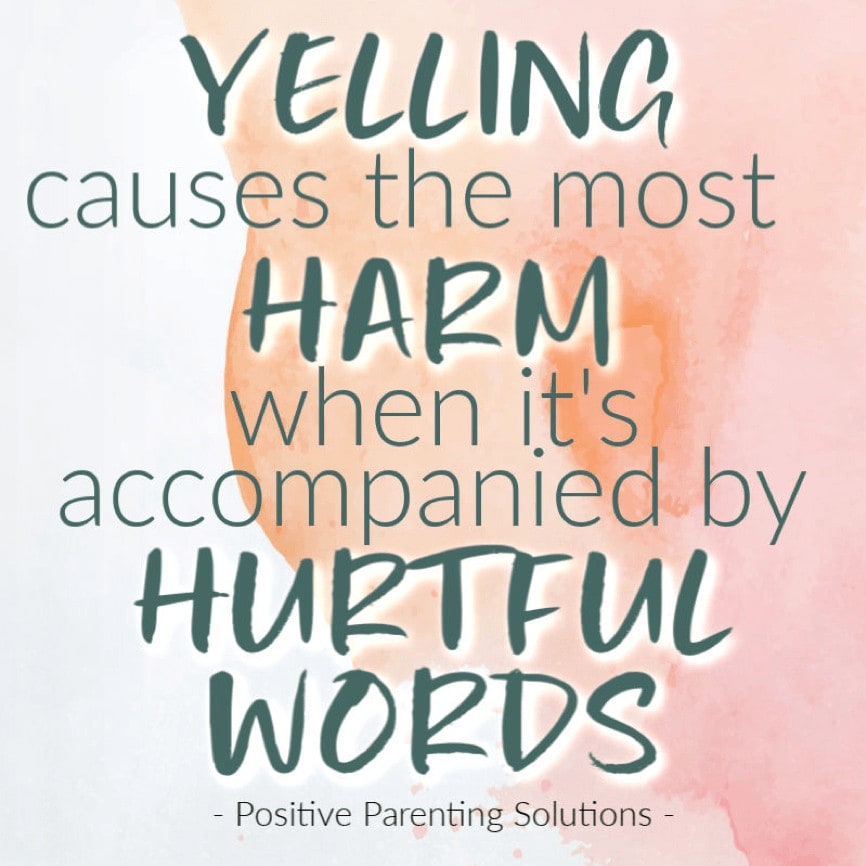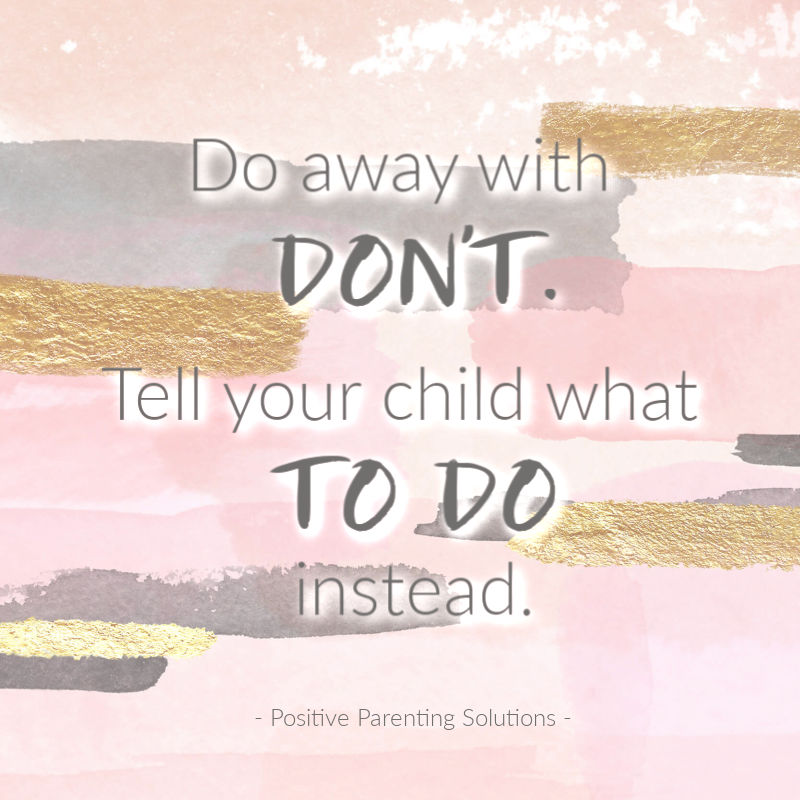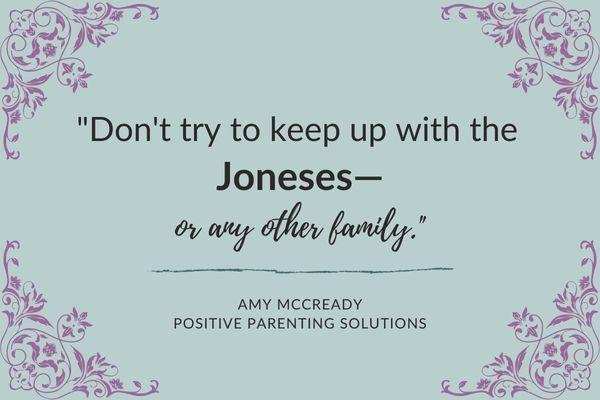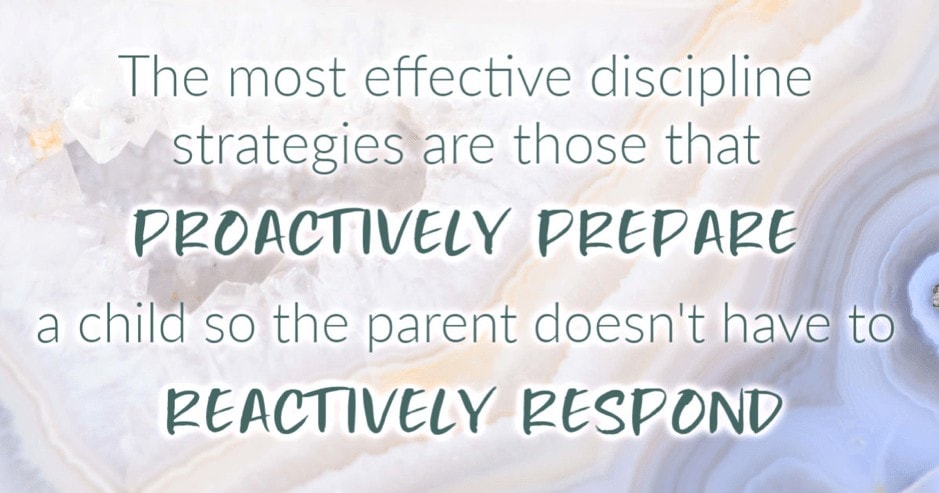
You’ve just finished packing lunches and are scrambling to get the kids out the door on time to catch the bus.
Your oldest can’t find her shoes.
Your middle needs a paper signed for a field trip and “TODAY IS THE LAST DAY!”
Your toddler just poured a giant box of Cheerios all over the kitchen floor, and you haven’t even had a sip of coffee yet.
You tried to hold it together, but in a moment of exasperation, you break.
“I TOLD YOU TO LEAVE YOUR SHOES BY THE FRONT DOOR!”
“WHY DO YOU ALWAYS WAIT UNTIL THE LAST MINUTE?! WHEN ARE YOU GOING TO BE MORE RESPONSIBLE?”
“AHHHHH!!! CAN SOMEONE WATCH THE BABY WHILE I CLEAN UP THIS MESS?”
You hadn’t planned to yell; you don’t want to yell, but sometimes it feels like the only way to express the exhaustion and turmoil you feel inside.
Oh, my precious friend. I have SO been there. Yelling used to be my go-to discipline strategy before I discovered the magical world of Positive Parenting. For the first time, I had the tools I needed to stop yelling and start parenting my kids effectively.
But the question still remains, is yelling harmful? Is it ever ok for parents to yell? Or maybe you’re like many parents I talk to who insist, “My child only listens when I yell.”
Wherever you find yourself on the yelling spectrum, stay with me. There is so much to learn about yelling and the impact it has on our children.
Why Do Parents Yell?
Most people aren’t naturally “yellers.” We didn’t go through high school yelling daily at our friends or graduate from college by yelling at our professors. Sure, we might have found ourselves yelling in a moment of road rage or out of frustration with an unfair situation, but no one enjoys yelling (or being yelled AT for that matter.)
When our babies are born and we rock that precious 2-month-old to sleep, there isn’t one ounce of us that can imagine screaming at that cherub in our arms.
But then that 2-month-old turns into a rambunctious 3-year-old or an energetic 5-year-old or a defiant 13-year-old and those feelings we held so dear years ago begin to dwindle away. Gone are the days of snuggles and baby sounds–here are the days of defiance, backtalk, and power struggles.
And because most parents aren’t equipped with appropriate strategies to handle those difficult parenting situations, we yell. We scream. We berate. We blame.
And then, we wallow. We feel shame. We feel guilty. We apologize.
We swear to ourselves we won’t do THAT again.
But just like clockwork, it happens again because while we’ve been yelling, we haven’t been resolving the root of our child’s behavioral issues.
In short, parents yell because they are pushed to the brink and don’t have more effective tools to use.
So the question remains, is yelling harmful?
Is Yelling Harmful?
A 2014 study published in the Journal of Child Development showed that children who grew up in homes that consistently yelled were more likely to have anxiety, depression, stress, and other emotional issues–similar to the effects of children who are spanked frequently.
But, before you take your kid in for a psych evaluation to see if yelling has negatively impacted her life, let’s unpack this a little more.
Is It Ever OK to Yell?
When your child is putting himself in danger–walking into a busy street, playing with fire, attempting an Evil Knievel stunt off the balcony–by all means, yell and yell loudly to get his attention.
The problem is, if we want yelling to be an effective means to keep our child safe and out of harm’s way, we can’t use yelling as our daily discipline strategy.
If we frequently yell at our kids, they become parent-deaf and begin to tune us out–think about The Boy Who Cried Wolf.
If we are ALWAYS yelling to communicate daily needs and requests (because kids won’t listen otherwise), the child will be less likely to respond when yelling is used as a mechanism to keep him safe.
What Types of Yelling Are Most Harmful?
Just because you raise your voice and ask your son firmly to “Put your little sister down!” doesn’t mean you need to save an extra $90 for therapy next month.
Yelling causes the most harm when it is accompanied by hurtful words. Let’s look at a few ways parents combine yelling with hurtful speech.

Blame
When we assign responsibility for a fault or wrong, it can have a detrimental effect on our child’s well-being.
Let’s look at the oldest daughter in our initial example. By saying, “I TOLD YOU TO LEAVE YOUR SHOES BY THE FRONT DOOR!” we put undue blame and stress on the situation.
Let’s look at it from your daughter’s perspective:
She’s already frazzled by the fact she can’t find her shoes. On top of that, she can feel your tension and sense your disappointment that ONCE AGAIN–you TOLD HER, but she forgot. (Her translation of your comment is: “How could you be so stupid?”) Your blame adds insult to injury in an already tense moment for her.
Instead of blaming her for misplacing something or failing to complete a task, instead ask a question:
“Where did you last see your shoes?” or, after she finds them, “What’s your plan for ensuring you can find your shoes tomorrow?”
Shame
In the same way blaming a child can escalate her emotional distress, shaming can be equally disturbing.
Take a look at the word choice toward the middle child in the initial example,
“WHY DO YOU ALWAYS WAIT UNTIL THE LAST MINUTE?! WHEN ARE YOU GOING TO BE MORE RESPONSIBLE?”
In this situation, we put unnecessary shame on the child through our hyperbolic speech. When we use phrases like “You ALWAYS…” or “You NEVER…” children begin to own these labels and will live up to the descriptors we’ve given them. They begin to view themselves as that label– “I’m the irresponsible one” or “I must be bad.”
Young children don’t understand hyperbole and sarcasm, so it’s important to speak clearly, directly, and calmly if you’d like to see a change in behavior.
Instead of shaming your child, express your frustration in a helpful way that lays out expectations for next time:
“Wow! A field trip sounds so fun! I’d love for you to go. If you’d like to leave it on the counter, I will do my best to get it signed this morning, but next time I’m going to need 2 days notice so I have plenty of time to review the information for the trip.”
What Should I Do If I Yell?
We are all human, my friend. We’re going to mess up. When you lose your cool, don’t lose hope–even these moments of frustration can be turned into beautiful teaching moments if we can humble ourselves enough to do so.
When everyone is calm, after the dust has settled, sit down and reconnect with your child. Let her know your reaction was inappropriate, and you should’ve handled the situation differently. You can model using “I feel…” statements to express the emotions you were feeling in the moment.
For example, “I feel stressed when I don’t have enough advanced notice to complete a task. It would be really helpful for me if we could develop a plan to help you keep track of your shoes (or organize your school papers) so we all know where everything is.”
Be sure not to add any extra qualifiers or blame to the apology. For example, “I feel stressed because you lost your shoes,” only adds fuel to the fire. Acknowledge where you overreacted, make a plan for the future, and let your children know how you SHOULD have responded.
If you forget in the heat of the moment, ask your child for a “do-over.”
By modeling this behavior, you will help your children develop appropriate conflict-resolution skills for the future. For more help navigating this conversation, here are 7 tips for apologizing to your child.

Final Thoughts
The fact that you’re reading this article, tells me you’re a great parent–you want the best for your children and you want to be the parent you always knew you would be. But if you’re like the thousands of families I’ve had the privilege of teaching, you may not be equipped with all the right tools.
Our natural instinct drives us to yell out of frustration and wallow in utter defeat. By learning the positive parenting strategies to parent effectively, you’ll no longer have to yell. That’s why I designed an entire course for parents of toddlers to teens–so that yelling would be a thing of the past.
Not sure if the course is right for you? Join me for a FREE ONLINE CLASS and I’ll teach you the No-Yelling Formula for Consequences. By using the strategies in this 1-hour online class, you’ll see a dramatic decrease in yelling from Day 1!
We wish you all the best in your parenting journey–and we are always here if you need help!











 A Guest Post from Laura Tierney, a Social Media expert and founder of
A Guest Post from Laura Tierney, a Social Media expert and founder of 










